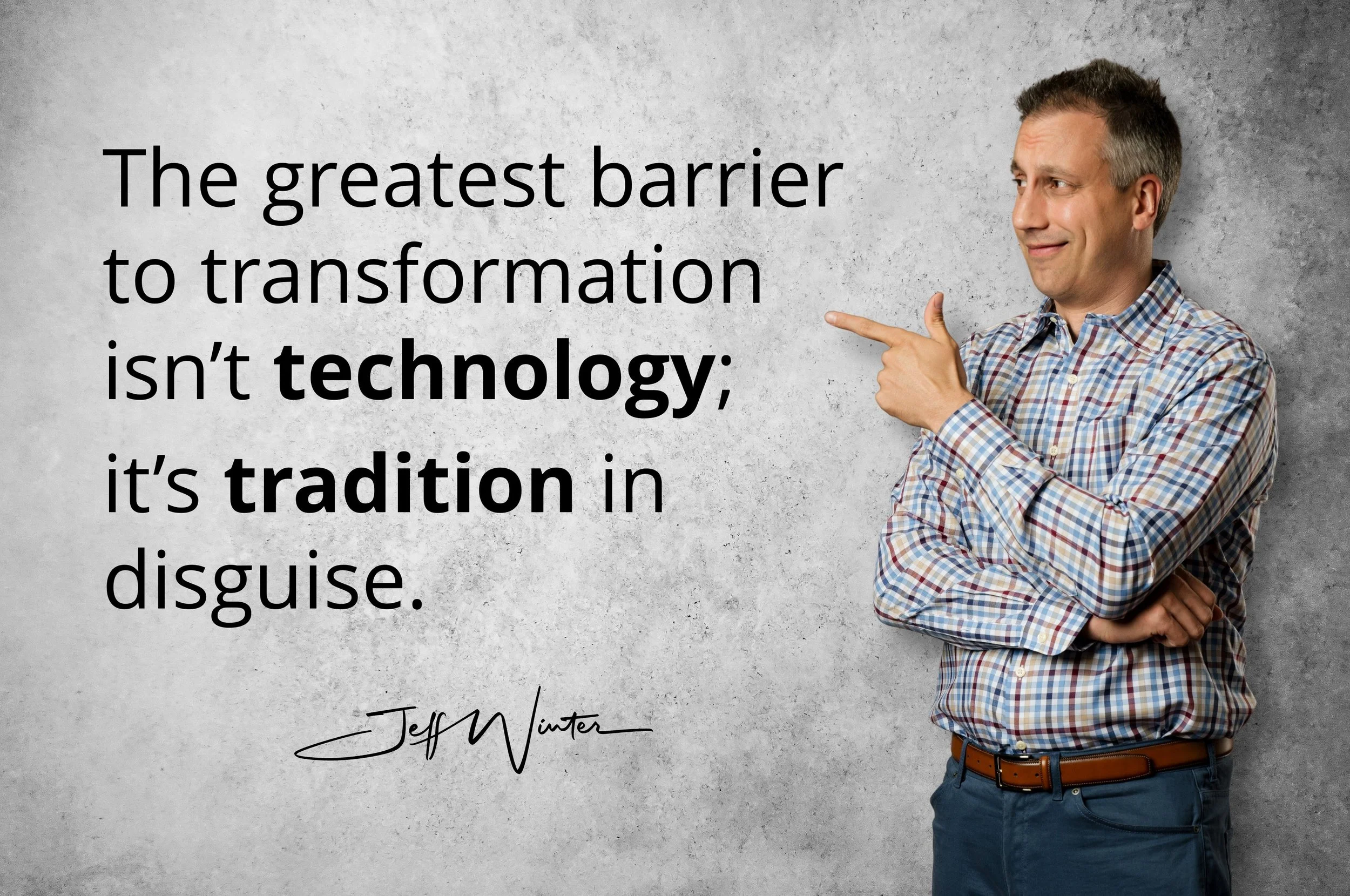Your Biggest Barrier to Transformation
The Problem We Keep Misdiagnosing
When digital transformation stalls, people instinctively look toward the technology. Maybe it’s not mature enough yet. Maybe it doesn’t integrate well with legacy systems. Maybe we didn’t pick the right vendor. Or maybe…just maybe…it was never about the technology in the first place. Most digital transformation efforts don’t fall short because of a tech gap. They fall short because of a mindset gap.
Tradition is the silent killer. And unlike a system that throws an error when something breaks, tradition rarely raises its hand. It’s embedded. It’s respected. It’s safe. And because it rarely gets called out, it quietly limits progress while the organization continues to believe it’s being rational, prudent, or methodical.
How Tradition Disguises Itself as Logic
Tradition rarely introduces itself as “the way we’ve always done things.” It dresses itself up in more defensible language:
“This is best practice.”
“Let’s not fix what isn’t broken.”
“We tried that once already.”
“That’s not in scope.”
“That’s not how this industry works.”
Every one of these phrases sounds like a reasonable response. But when we look closer, many are simply rationalizations to avoid discomfort, disruption, or loss of control. Especially in manufacturing, where precision and repeatability are part of the culture, it’s easy for tradition to blend in unnoticed.
And it’s not just in language, it’s in systems, roles, governance, and incentives. Legacy systems aren’t just about outdated software; they’re about the processes, workflows, and “tribal knowledge” that form around them. Governance models often reward caution over courage. Incentives may still favor efficiency over innovation, reinforcing short-term thinking even when long-term transformation is the goal.
Tradition isn’t just habit, it’s identity. That’s what makes it so difficult to change. People aren’t just clinging to processes, they’re clinging to familiarity, to what made them successful in the past.
When Culture Moves Slower Than Code
Here’s the reality: culture moves slower than code. You can deploy an AI-powered MES system, roll out IoT connectivity, and build beautiful dashboards. But if your operators don’t trust the data, your managers don’t change how they make decisions, and your leaders don’t model new behaviors, then you haven’t transformed. You’ve just installed new software on top of an old mindset.
This is why even the best pilots and proof-of-concepts fail to scale. The tech works. The use case is solid. But when it comes time to roll it out across plants or business units, the organization stalls. People resist. They “don’t have time.” Other priorities take over.
But if we’re honest, the pilot didn’t fail due to lack of functionality, it failed because no one did the cultural groundwork required to sustain the change.
That groundwork isn’t glamorous. It involves aligning incentives, reframing risk, unlearning habits, and rewarding behavior change. It involves leaders going first, not just approving the strategy, but modeling the new way of working. Because no one believes a transformation is real until leadership changes how they operate.
Transformation is not about plugging in new tech. It’s about pulling out old thinking. And that is infinitely harder.
Redefining What “Safe” Looks Like
For years, we’ve equated safety with predictability. But in today’s environment, the real risk isn’t change, it’s stagnation. The market doesn’t reward companies that stay the same. It rewards those that learn the fastest, adapt the quickest, and evolve ahead of demand.
The safest companies moving forward won’t be those that avoid risk entirely, they’ll be the ones that take smart, strategic risks while building a culture resilient enough to absorb and adapt to change.
Before implementing your next wave of digital tech, ask a different set of questions:
Are we creating a culture that challenges sacred cows?
Do our KPIs reinforce the behaviors we say we want?
Are we training our people for new ways of thinking, not just new tools?
Are we actually prepared to stop doing the things that no longer serve us?
Because until we answer those questions honestly, we’ll keep mistaking tradition for truth.
What Happens When We Get It Right
When companies do confront their traditions, when they truly challenge their assumptions, update their thinking, and align their culture—the transformation becomes real. The tools get used. The systems become enablers, not replacements. And the workforce stops seeing change as something that’s happening to them and starts seeing it as something they own.
You’ll know you’re getting close when people stop asking for permission to innovate and start asking why something hasn’t changed yet.
That’s when the shift becomes permanent.

